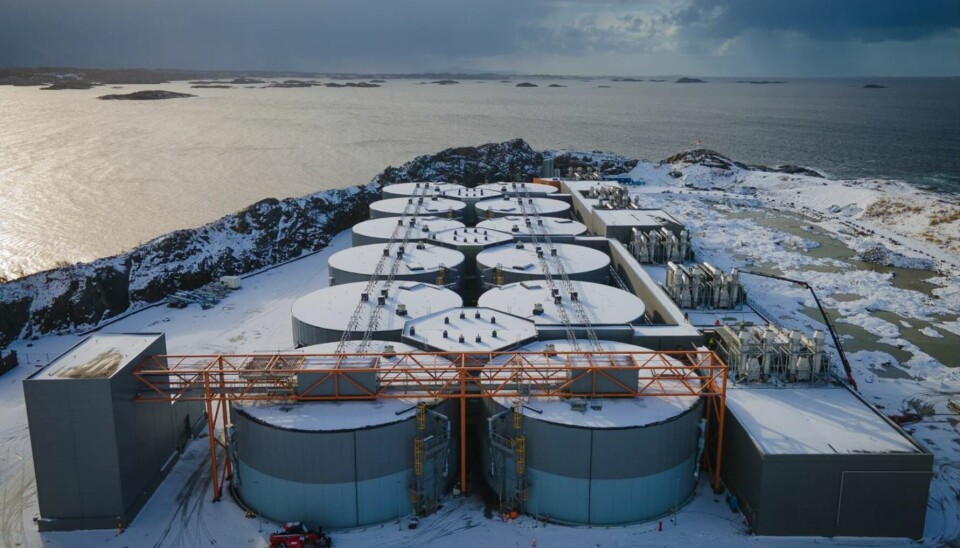
External pathogens blamed for raised mortality at land-based salmon farm
Land-based fish farmer Salmon Evolution has reported increased mortality levels in selected fish groups at its facility in Norway.
At 29 April, the aggregated mortality level for each batch ranges from 0.3% - 7.9%, the company said in a market update at the weekend. The increased mortality is related to gill health issues suspected to be caused by external pathogens.
Salmon Evolution, which uses a hybrid recirculation / flow-through system, said it was investigating the root cause and taking precautionary steps to mitigate the situation, including increased UV (ultraviolet) treatment of intake water.
It added that the facility at Harøy Island in the north of the western Norway region is otherwise operating under stable conditions with relevant water quality parameters at normal levels.
Water from depth
Salmon Evolution draws its seawater from two intakes pipes at depths of 25 and 95 metres below sea level and filters it before it enters the fish tanks.
The company, which expects to reach steady state production of 7,900 gutted weight tonnes in phase 1 of its on-land farm within a year and eventually produce 31,500 gwt annually at Harøy Island, successfully harvested its first batch of fish towards the end of last year and has four other batches at different stages of development.
Current biomass of batch 2 is estimated to more than 800 tonnes (live weight) with an average weight of approximately 4 kg (LW). Harvesting will commence shortly with the full batch expected to be harvested by early June at the latest.
Batch 3 is currently split into two fish groups with an average weight of around 1.6 kg. One of the fish groups is currently experiencing increased mortality.
Batch 4 is currently split into two fish groups. Low accumulated mortality, but at increased levels for the smallest group.
Batch 5 has normal feeding and low mortality levels.
Financial impact
Salmon Evolution said it plans to stock five additional batches during 2023, with the next two batches planned to be stocked during the current quarter. Depending on the future performance of the existing batches and any potential decisions to commence early harvest at suboptimal weights, expected timing for phase 1 steady state production volume may be delayed from late Q3 2023 to late Q4 2023.
“As to the financial impact of the situation, batch 2 is still expected to generate substantial revenues upon harvest and sale. Furthermore, any harvest of fish at suboptimal weights is also expected to generate revenues,” said Salmon Evolution.





















































